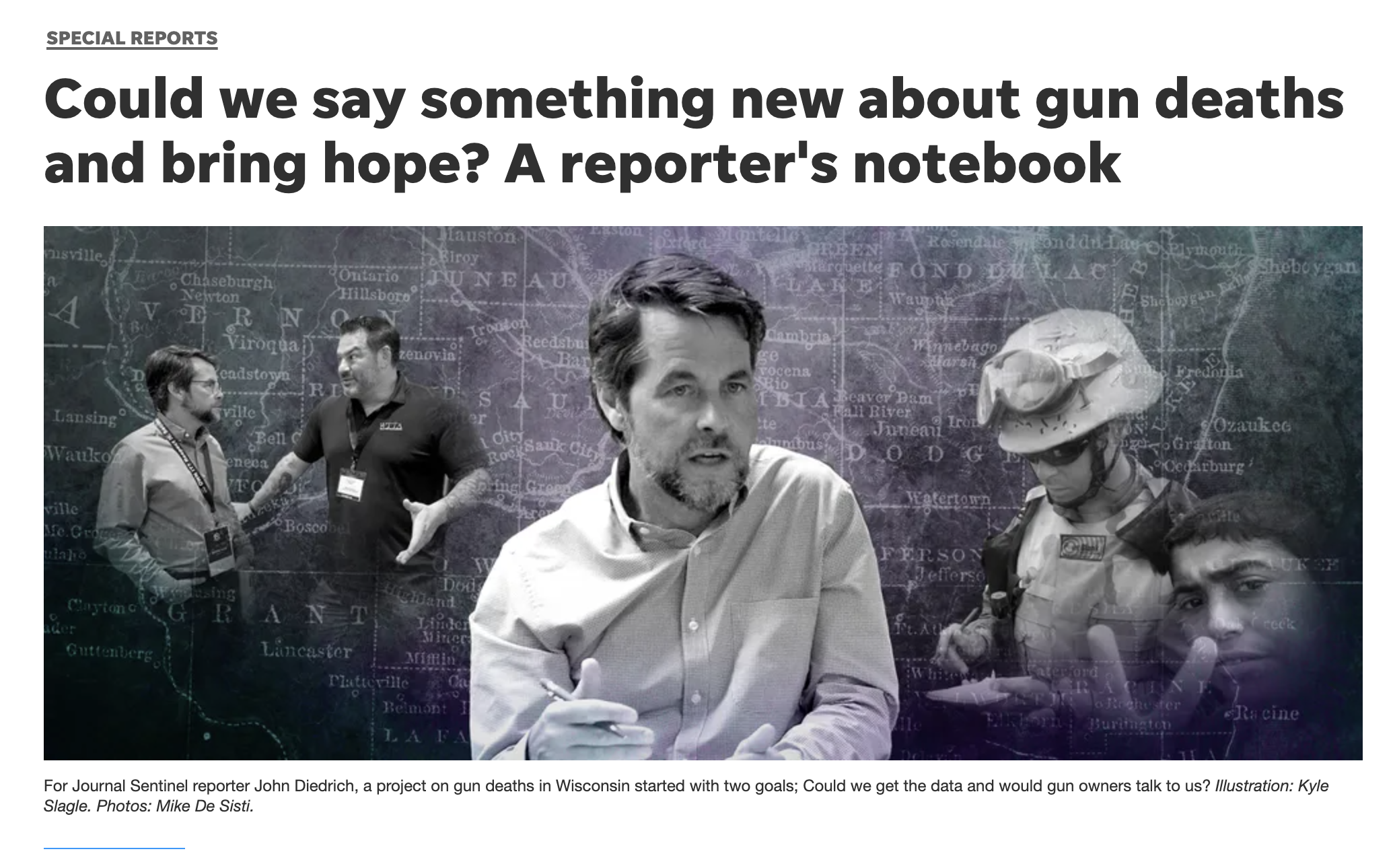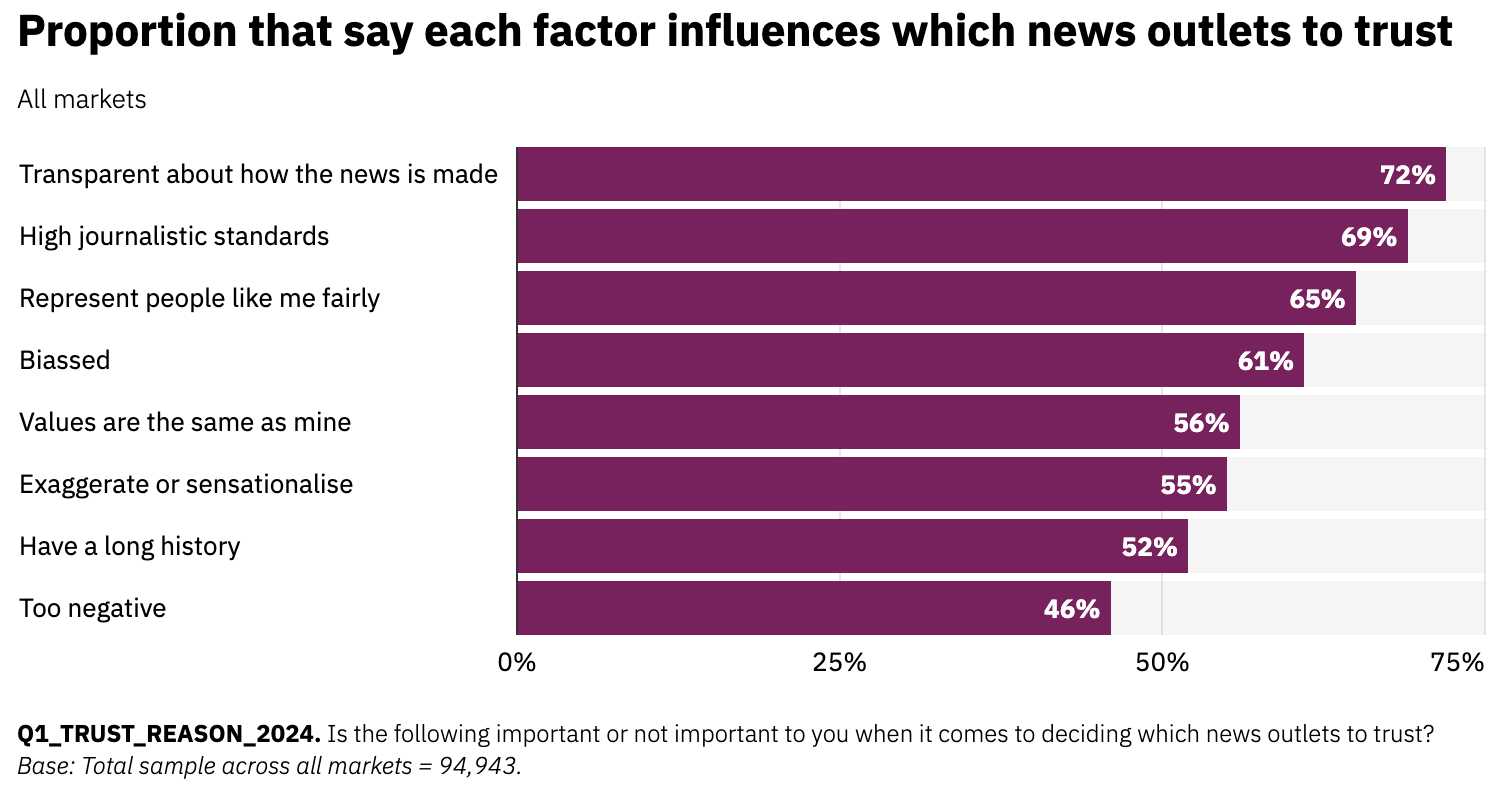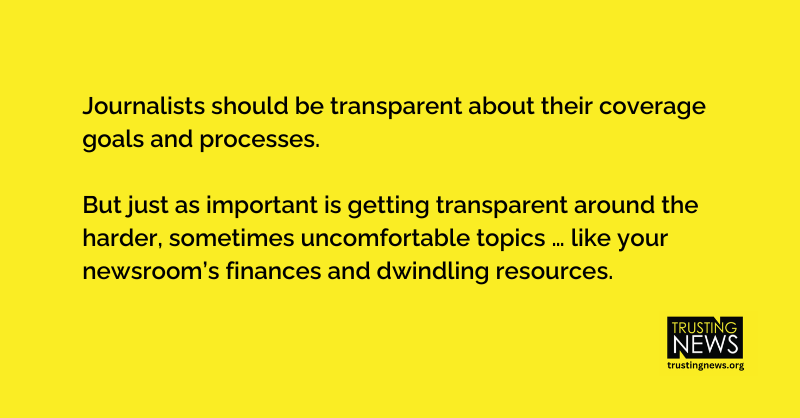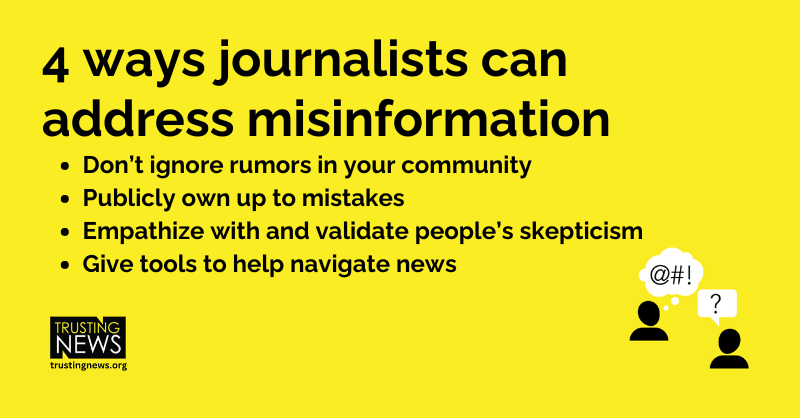
This weekly Trust Tips newsletter shares quick, actionable tips for how journalists can earn and sustain trust. Subscribe to get it in your inbox at trustingnews.org/newsletter.
Trust Tips 246: Make your reporting on guns less polarizing
Reporting on guns is full of potential landmines.
Whether it be the headline, who you interviewed for the story, or the language you used, it’s almost guaranteed that someone will disagree with your coverage or at the very least, make quick judgments about it purely based on the topic. The same goes for any hot-button issue or emotionally charged topic.
Those judgments, though, are sometimes warranted, especially when it comes to gun coverage. It’s not unusual for journalists to make mistakes when reporting on guns – whether that be using catch-all phrases, incorrect terminology, or generalized descriptions and labels that oversimplify people’s views and perspectives on the topic. (Check out this great resource, 7 Things Journalists Should Know About Guns.)
There’s a real danger when journalists do this, even when it’s completely unintentional, because it reinforces polarizing narratives about guns and gun ownership, and can paint an inaccurate picture of what’s actually happening or how people in your community actually feel.
This doesn’t help move public dialogue about the topic forward, and it sure doesn’t help change the public’s perceptions that the media is pushing some sort of agenda.
If we want our coverage to aid in civil discourse and ultimately, solutions, we have to first commit to avoiding perpetuating stereotypical narratives and tell more accurate and complex stories about the spectrum of perspectives in our communities. (Related resource: our Anti-Polarization Checklist for journalists.)
Here’s a great example of some recent reporting that did this.
Example: Milwaukee Journal Sentinel
When doing a big state-wide investigation on gun deaths, Milwaukee Journal Sentinel reporter John Diedrich wrote a behind-the-scenes piece that clearly lays out the goals and mission of this investigation and how the reporting process worked.
Diedrich wrote: “As reporting continued, O’Brien Fellowship director Dave Umhoefer asked me: Can we do this project without any even subtle shaming of gun owners, but just tell their stories respectfully? This guided my approach to the reporting.”
Below we pulled out some highlights from the column and share how you can replicate the ideas in your own coverage.

Tips for more complex gun coverage
Get clear about your goals. Throughout the column, Diedrich continually points back to the goals and mission of the project by thoughtfully walking readers through the questions he’s trying to answer with his reporting. Remember: People will see gun coverage and immediately assume you’re coming at it with a specific angle or agenda. You can help mitigate this by articulating your goals. Start by thinking about what you wish people knew about the motivation behind your reporting. Are you trying to help people understand an issue more fully? Are you trying to move beyond easy talking points?
Address anticipated pushback. With controversial topics like guns, it’s fairly certain you’ll face some sort of audience pushback. How can you use that potential pushback to better explain your approach? In this example, Diedrich does this by explaining why they were including suicide deaths in their reporting on guns. He also gets really clear about sourcing, listing a range of experts and people he talked to and how they offered different viewpoints. Before publishing, think through the anticipated pushback you’ll likely hear and then get on the record about how you tried to address those complaints or misassumptions in your reporting.
Complicate the narrative. In the column, Diedrich pushes back on phrases like “gun safety” and “gun violence” explaining how phrases like that can mean a range of things depending on someone’s perspective and experiences. We see again and again that the language journalists use signals a whole lot to our audience. The more you can avoid overgeneralizations, get specific about what you’re actually talking about, and explain how you’re being careful with your language choices, the better.
Root reporting in humility and curiosity. Diedrich showed a lot of both by being upfront about his own knowledge gaps and sharing how his perspectives were challenged by his reporting. While yes, it can be good to signal your credibility as a reporter (Diedrich does this by sharing a list of his previous reporting on guns and conflict), being honest about what you don’t know will help strengthen your reporting and increase empathy.
Get on the record about your efforts
Most people who see your coverage will never see your behind-the-scenes column (or if they do won’t take the time to read it!).
If you compile information about your reporting process, make some of that explainer readily available for anyone who might see the story. One way you can do this is by including a sentence or two explaining the why behind the story and placing it somewhere prominent in your coverage — whether that be in an editor’s note, in social chatter, or in a newsletter blurb. Even if people choose not to read your whole explanation, just seeing that there was careful consideration behind the reporting helps send signals to your audience about your ethics and credibility.
More examples and resources
Example: America Amplified
Like I shared above, the more we can root our reporting in honest, curious questions, the more empathetic our reporting will be. Sometimes this means sharing what we don’t know and admitting when we’re not an expert on a topic. This example from Chelsea Naughton at America Amplified is such a great example of that. Not long after the devastating Uvalde shooting, Naughton wrote a first-person newsletter about her fears of reporting on guns and what she was doing to educate herself, including how she was trying to hear from a variety of different perspectives on the topic. At the bottom of the newsletter, she also includes a great list of resources for reporting on guns for journalists we highly recommend you check out.

Example: Washington Post
The Washington Post recently published an investigation on gun deaths caused by AR-15 shootings. Before readers can scroll into the story, the Post included an editor’s note that links to a column explaining why they published graphic images and explanations of guns. (We’re adding an additional warning that these photos are heartwrenching and indeed very graphic.) The column goes through some of the behind-the-scenes of how the staff deliberated the decisions around the reporting process and how they weighted the importance of informing.
Trusting News Resource: Covering mass shootings
When covering traumatic events, it’s especially important for journalists to explain their coverage goals and work to reduce harm. We have a resource with some best practices and guidance for how journalists can do this when covering mass shootings. While we hope you never have to cover a mass shooting, we encourage you to familiarize yourself with these best practices as they can be applied anytime you’re covering any sort of gun violence or other traumatic events.
Have examples to share?
If you put these ideas into action please let us know by simply responding to this email or you can submit examples via this form. Every example we can collect makes it easier for other newsrooms to follow your lead.
At Trusting News, we learn how people decide what news to trust and turn that knowledge into actionable strategies for journalists. We train and empower journalists to take responsibility for demonstrating credibility and actively earning trust through transparency and engagement. Subscribe to our Trust Tips newsletter. Follow us on Twitter and Facebook. Read more about our work at TrustingNews.org.

Project manager Mollie Muchna (she/her) has spent the last 10 years working in audience and engagement journalism in local newsrooms across the Southwest. She lives in Tucson, Arizona, where she is also an adjunct professor at the University of Arizona’s School of Journalism. She can be reached at mollie@trustingnews.org and on Twitter @molliemuchna.





